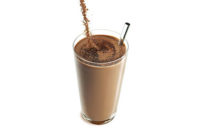Over my 20 years of consulting for the U.S. dairy industry, and 15 years of writing for Dairy Foods, I’ve learned a lot about protein quality. On the golf course recently, I mentioned that I was a food scientist and nutritionist. My golf partner said: “Did you know that egg protein is the only complete protein with all seven essential amino acids?”
I responded, perhaps more loudly that was appropriate on a golf course: “That’s absolutely not true. And there are eight essential amino acids.”
Consumers are deluged with information about protein, not all of it factual. This year’s IFT meeting featured a deep dive into alternative proteins, which pose an increasing challenge to dairy.
So how could our industry best convey the superiority of dairy proteins to consumers?
Continue to fund research
“One key is to continue to finance good clinical science to show the superiority of whey protein,” said Peter Schouw Andersen, director of application science & technology, Arla Food Ingredients.
In 2017, Arla published a brochure based on a study that clearly showed individuals who exercised had an extremely high knowledge of whey protein and its benefits, he noted.
Research is an area where various dairy industry groups from across the globe could join forces.
Relay sound science to consumers
One of the big arguments for plant proteins is their sustainability. A new U.S. Dairy Export Council (USDEC) brochure, “Why U.S. Dairy Delivers in the Crowded Protein Marketplace” (https://tinyurl.com/ycscb893), highlights dairy’s contribution to sustainability.
“We need to deliver nutrition messages that they want to hear, are willing to hear, and understand,” said Terri Rexroat, USDEC’s vice president, team lead – Latin America.
The new brochure also compares the protein quality of dairy protein to various plant proteins. One scoop of whey protein isolate contains 25 grams of protein and only 120 calories.
To get the same 25 grams of protein, individuals would need to consume 1-3/4 cups of black beans (380 calories), 7 tablespoons of peanut butter (660 calories) or 4 cups of oatmeal (670 calories). Whey protein isolate also delivers more leucine and essential amino acids than the plant proteins.
“The approach needs to be two-pronged,” said Anand Rao, Ph.D., vice president of research and development – ingredients for Agropur. “The dairy industry need to establish trust with consumers by leading with transparency [and] addressing their emotional concerns such as sustainability, animal health, hormones, etc.
“We also need to capture the opportunity that dairy proteins provide: superior nutrition and functionality,” Rao continued. “Innovating with convenient, nutrient-dense foods, snacks and beverages with rounded taste and texture will be key to acceptance.”
Improve functionality, performance
Improved functionality allows dairy ingredients to shine in a wide range of food and beverage applications. For example, Idaho Milk Products offers improved modified milk protein concentrates that hydrate faster and have improved heat stability in neutral-pH drinks, yielding a finished beverage that is less grainy and chalky.
Dairy ingredients showcased at this year’s IFT Food Expo included a clear native whey protein in beverages from Lactalis, extruded milk protein crisps from Erie Foods, a partially hydrolyzed whey protein isolate in a coffee beverage from Grande Ingredients, a lower-lactose (~0.1%) whey protein isolate from Hilmar Ingredients, a clear pre-acidified whey protein isolate that delivers less astringency and cleaner flavor from Milk Specialties Global, and crispy whey protein pods from Agropur.
After tasting a multitude of dairy and plant protein prototypes at the show, I judged dairy a clear winner on taste and texture.



